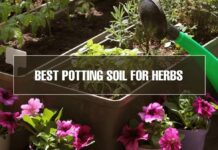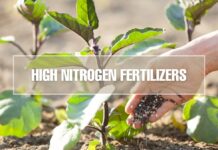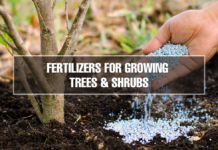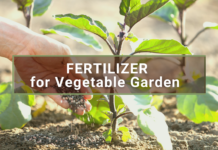
What is Compost?
Compost is organic matter that was decomposed in a composting process. This method recycles various otherwise considered waste products organic materials and creates a soil conditioner.
Compost is nutrient-rich. It is used in gardens, landscaping, horticulture, urban farming, and organic farming, for example. In many ways, the compost itself is useful to the soil, including as a soil conditioner, a fertilizer, the introduction of essential humus or humic acids, and as a natural soil pesticide. Compost is useful in habitats for erosion control, reclaiming land and lakes.
 Composting Process and Types of Composting
Composting Process and Types of Composting
Composting is a natural biological process under aerobic conditions controlled (requires oxygen). In this process, various microorganisms break down organic matter into simpler components, including bacteria and fungi. The composting cycle depends primarily on the composting system’s environmental conditions such as oxygen, temperature, moisture, organic matter, and the size and behavior of microbial communities.
Hot Composting (Open Air Composting)
Open Air composting is the most efficient system within a short time to produce quality compost. It also facilitates the removal of weed seeds, fly larvae, and pests. While open-air composting needs a high degree of management using the windrow method or bin method, hot composting requires a lower degree of management using the in-vessel method.
Cold Composting
This method is suitable to apply organic matter to trees, garden plots, degraded areas, etc. Time will be taken by this method to decompose organic matter is largely controlled by environmental conditions and may take one year or more.
Trench Composting
The composting of the trench is simple. Simply dig a 6 to the 8-inch deep trench, fill it with 3 to 4 inches of organic material and cover it with soil. And wait a couple of weeks to plant just above the trench. This cycle does not encourage the removal of weed seeds, fly larvae, and pests, and it may be relatively slow to compost.
Sheet Composting
Sheet composting is performed by spreading or decomposing organic material on the surface of the soil. The organic material is decomposed and recycled into the soil over time. This process is ideal for forage land, tillage applications, erosion control, landscaping on the roadside, etc. The method does not support weed seed destruction; fly larvae, insects, etc. and composting materials must be limited to waste and manure from plants. Again, the time of decomposition is governed by conditions of the environment and can belong.
The function of Compost in Soil
The compost process contributes healthy nutrients in an easily assimilated form to the soil and helps improve soil structure by lightening heavy clays and increases the properties of water retention in porous sands. This will allow for free passage of air and micro-organism, allowing roots to easily grow into the soil. Compost absorbs twice as much water from the air as garden soil; almost four times as much as clay; and eight times more than sand.
The water is kept in reserve so it can be used by plants during dry seasons. Compost has non-nitrogen, phosphorus, and potassium nutrients present in chemical fertilizer and even trace elements (such as zinc, iron, and magnesium) that are very useful to grow plant roots.
Composting Process
The composting cycle is conducted by a diverse population of micro-organisms mainly aerobic, which decompose organic material to produce and reproduce. By maintaining the carbon-to-nitrogen ratio (C: N), oxygen supply, moisture content, temperature, and pH of the compost pile, the development of these microorganisms is promoted. Properly managed composting cycle increases the rate of natural decomposition and produces enough heat to kill seeds of weeds, pests, and larvae of flight.
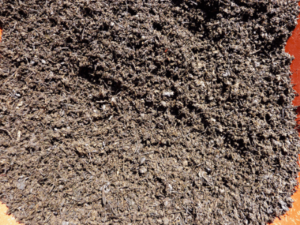
Also, involves 4 main components;
- Organic Matter
- Oxygen
- Bacteria
- Moisture
Organic Matter: The organic matter requires products from plants and several manures from animals. Organic compost products must contain a combination of organic brown material such as dead leaves, roots, manure and organic green material such as lawn clippings, fruit rinds, etc. Brown materials are supplying carbon while nitrogen is supplied by green materials.
Oxygen: Oxygen is needed to support the bacterial breakdown of plant material. You will want to transform the compost pile in order to supply oxygen so that materials are carried to the middle of the pile at the edges. Turning the battery is very important for the full composting and odor control.
Bacteria: In the composting process, bacteria and other microorganisms are the real workers. The present bacteria break down the plant material into useful compost for the garden by supplying organic materials, water, and oxygen. As the bacteria break down the plant materials, they release heat that is concentrated in the center of the stack.
Moisture: To help the composting cycle, moisture is very necessary. Compost must be similar to a wrung-out sponge’s wetness. If the stack is too dry, the materials will gradually decompose. When adding a large quantity of brown organic material, add water during the dry period
Organic Composting Process
Organic compost is an organic matter that bacteria have broken down. Compost in all soils is a key ingredient. This incorporates organic matter, improves sandy soils, encourages beneficial bacteria and earthworms, raises nutrients, and enhances soil texture.

Applications of Compost Process
Compost can be used in a number of applications. In agriculture, horticulture, urban farming, landscaping, and home gardening, high-quality compost can be used. In many applications such as erosion control and roadside landscaping, medium-quality compost can be used. Low-quality compost can be used as a landfill or land reclamation application.
Advantages of Composting
- Useful composting for enriching the soil, helping to retain moisture and remove plant diseases and pests.
- It reduces chemical fertilizer requirements.
- Decreases the emissions of methane from landfills and decreases carbon footprint.
- Composting prevents a decrease in nitrogen supply that normally occurs when organic materials are applied directly to the soil, such as sawdust or straw.
- Composting is also useful for recycling waste from the garden, residues from the remaining crops, weeds, and manures. There are many forms of local organic waste that can be composted, such as apple pumice, lake weeds, leaves, and grass clippings.
- Windrow and aerated static pile composting process are influenced by ambient temperatures and weather conditions.
Worm Composting or Vermicomposting
Worm composting or vermicomposting process is used to recycle food scraps and other organic material into a beneficial soil alteration called vermicompost. Worms eat food scraps that become compost when they pass through the body of the worm and compost through the tail end of the worm. You can then use this compost to grow many plants. Recall that the worms consume nutrient-rich fruit and vegetable scraps and turn them into nutrient-rich compost to learn why vermicompost is good for plants.

Also, See: Ultimate Guide on Vermicomposting – Process, Techniques, and Worm Farming
Bio Compost
Bio-compost is plant matter decomposed and used as a fertilizer or manure. The main ingredient of organic farming is bio-compost. It’s nutrient-rich.
Bio compost is an organic fertilizer that is environmentally friendly. Bio-compost is made from waste materials from the sugar industry that is decomposed and filled with various plants and human-friendly bacteria and fungi.
Aerobic Composting
Aerobic composting is the degradation of organic matter using oxygen-needed microorganisms. The microbes that are primarily responsible for composting occur naturally and live in the moisture around the organic matter. Oxygen from the soil is released through the moisture and the bacteria are taking it up. The sun, water and carbon dioxide (CO2) by-products occur as aerobic digestion. While CO2 can be listed as a greenhouse gas, it is not included in emissions as an evolution from composting.
 Anaerobic Composting
Anaerobic Composting
Anaerobic composting is a decomposition that takes place using microorganisms that do not need oxygen to survive. Most of the chemical energy found in the starting material is released as methane in an anaerobic composting system. The process is characterized by very strong odors and only a small amount of heat is produced indicating that it takes much longer to decompose and does not achieve adequate temperatures to safely kill bacteria, weeds, and seeds. External or artificial heat is usually added to solve these limitations.
 The Benefits of Compost
The Benefits of Compost
Compost energizes the web of soil food, consisting of microscopic bacteria and fungi, along with earthworms, crickets, and many other forms of life. Some fungi establish symbiotic relationships with plant roots, or mutually rewarding partnerships, allowing vegetables to feed themselves more effectively. Research shows that compost improves tomatoes and other vegetables ‘ ability to cope with common diseases and can also improve their flavor and nutrition. Compost also helps keep moisture from the soil. Through composting, you improve the ability of your garden to grow healthy plants while reducing your waste volume.
Difference between Compost and Vermicompost
Composting is a high-temperature aerobic process, while vermicomposting is a process where worms do the job. This means that a low-temperature procedure in vermicomposting.
Vermicomposting can be done for bathtub-size vessels in very small containers. The vermicomposting worms eat through the added kitchen waste and paper. It is a sticky process and as a worm tea, some drainage is widely used. Vermicomposting can be achieved on a larger scale, but to avoid overheating the pile or overfeeding the worms, the waste should be spread in thin layers. Worms are creatures that are reactive and can take off when things are incorrect.
Compost piles are usually hot because carbon dioxide and heat are released by the aerobic breakdown of organic matter, resulting in piles as high as 150 ° F.
Worm composting is a cooler process with temperatures ranging from 50-90 ° F. The downside to less heat is that no bacteria in the food waste, manure, or whatever you feed worms will be destroyed by vermicomposting.
Also, See: How To Make Organic Compost From Your Kitchen Waste, Manure
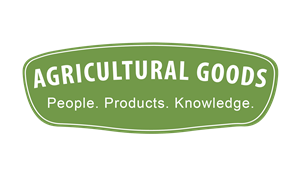
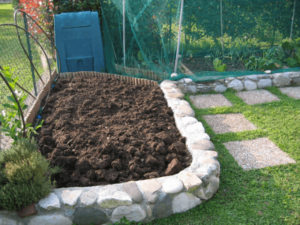 Composting Process and Types of Composting
Composting Process and Types of Composting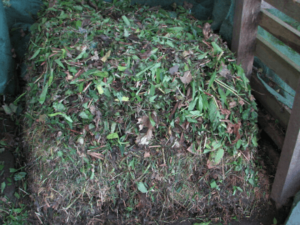 Anaerobic Composting
Anaerobic Composting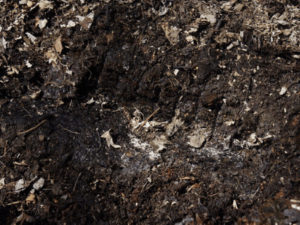 The Benefits of Compost
The Benefits of Compost

